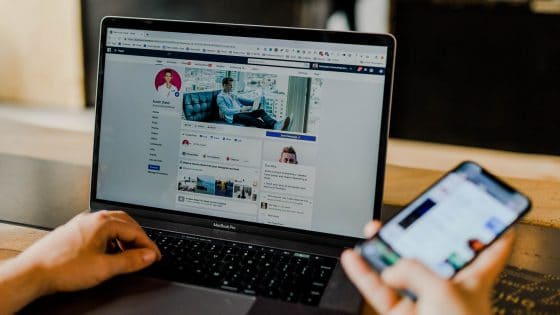Author, Joshua Boyd
The number of social media conversations happening at any given time is massive. They ebb and flow with the news and cover any and all topics. From grandparents sharing local, old photos on Facebook groups to endless pop culture debates on Reddit.
Social listening, or social media listening, gives you the ability to take all these conversations get meaningful insights and data out of them. This guide will take you through all aspects of social listening and how it could be of use to you.
What is social listening?
Social listening is the process of collecting data from social platforms and forums on a chosen topic. This could be a brand, an industry, or anything at all.
The collected data is then analysed to find trends and useful insights. This can influence a wide range of processes including business operations, product updates, and advertising approaches.
It’s not an entirely new approach, it’s just that the technology is different. Brands have been trying to gauge the opinions of the public and their customers with surveys since forever.
What tech means now is that you don’t even need to prompt people anymore. People are talking about anything and everything online, it’s just a matter of finding them.
We’ll get into more depth shortly, but first, we’ll use a quick example to show how important social listening is.
Ice cream on a cold night
You’re Ben and Jerry’s, and you’ve got a big social media ad budget to get people buying your products. Following common sense, you put more money in during the summer, and you also keep an eye on the forecast. When it’s going to be sunny and hot, you give your ads another boost and fine tune your messaging.
All very sensible and a tactic that likely works very well. But then you notice something. A snowstorm that was talked about all week in the local press hits New York. In anticipation, you leave your ad budget for the city unchanged, or even lower it, assuming the last thing people want during cold weather is a cold dessert.
Instead, upon checking your ad’s performance in New York over the weekend, you see click-through-rates have jumped up. When the sales figures come through for that weekend, you see they’re up as well.
What happened?
Using a social listening tool, you could easily find out. And this is pretty much what Ben and Jerry’s really did.
They looked at mentions around their products on sites like Twitter and Instagram and noticed there was an uptick during poor weather, particularly when it was rainy. By combining two data sources (weather and social), they found a massively valuable insight (this is one of the big benefits of digital consumer intelligence).
It turned out that when rain forced people to stay in watching films, TV, or Netflix, they wanted ice cream to go with it. In other words, lots of social media posts like this:
This opened up a whole new area for Ben and Jerry’s to target. Now they would look for rain in the forecasts, as well as sun, and adjust their marketing plans accordingly.
They even went a step further and created a flavour just for this purpose: Netflix & Chill’d.
Spoiler Alert! @netflix and Ben & Jerry’s just became official! #NetflixandChillld
— Ben & Jerry's (@benandjerrys) January 16, 2020
Find out more at https://t.co/KQTuLu8mue pic.twitter.com/9Xj8HDZKSN
This was all achieved with a very simple social listening approach, and it worked wonders for Ben and Jerry’s. When you consider you can conduct brand management, track PR issues, and influence product design too, it becomes clear just how powerful and invaluable social listening is.
What’s the difference between social listening, analytics and intelligence?
You may have heard these other terms and thought they’re the same thing. There is a lot of crossover between these terms, but there are differences. We’ve already defined social listening, so let’s go through the other two.
Social media analytics. Social media analytics is the process of actually analysing that data, again often with a tool like ours. It might also be called social media analysis. The analytics part is finding insight from the data – who is saying what, topics of conversation, where it takes place, authors, and so on. That involves tools and features such as author analysis, page type analysis, topic and sentiment analysis. The term is often used to mean social media monitoring, or social listening, as generally you don’t listen or monitor without doing the analytics part, and usually use the same tool for both stages.
Social media intelligence. Social media intelligence – or sometimes social intelligence – means the knowledge or insights gained from analysing social media data. That could be, say, the knowledge that your customers hate a feature of your product so that you can then inform your product development team. Or the knowledge that your target audience really loves rap music right now, so that’d be a good thing to capitalise on in your marketing. They’re the kind of insights that our clients have detailed in these case studies about their use of Brandwatch. Social media intelligence is ultimately about helping make business decisions based on social media analysis and data. It’s often also called social business intelligence, for this reason.
Who can use social listening?
People talk about everything online. That means there’s scope for pretty much any company or organisation to use social listening. As long as it’s done properly, there’s something to be learnt.
B2C. If you’re a B2C company then it’s a great way to hear what your customers are saying about your brand. Do they speak highly of you or, as Chipotle found out, speak negatively? You can see which products get discussed the most, collect feedback, and learn more about their demographics. Not only that, you can use it to build research for business strategy. Maybe you’re looking to branch out into a new product area. You could see what people are saying about it already and even see if your existing customers would be interested in the new product too.
B2B. For a B2B company, social listening can be great for competitive benchmarking as well. You can look at who out of your competitors has the largest share of voice, or keep an eye on the latest developments. That’s on top of learning more about potential customers. For example, while you sell to businesses, you still need to connect with people to make that happen. You could work out your target decision makers, such as CEOs or CTOs, and use social listening to see what they’re interested in, their demographics, and how to interact with them.
Charities. From fighting cancer to the local museum, charities can also use social listening. Looking at conversations around certain topics can give great insight into the work you do. That’s not to mention brand monitoring so you can be aware of anything negative being said about your organisation. It could even feed into your next campaign. You may identify an audience of regular donors. After analysing their conversations you can see the vast majority love cats. So in your next promotional video, you involve cats to grab their attention and pull on their heartstrings.
Government. Even government departments can get involved. There’s a vast number of ways from understanding demographics, receiving complaints, and getting feedback on new policies or strategies. For example, you could be the Department for Environment, Food, and Rural Affairs and you’ve just released a new campaign all about backing British farming. You could use social listening to see how well the message spread, who is reached and what they thought of it. All important metrics for assessing a campaign’s success. These are just a few examples. You can see some of our full case studies here. They cover plenty of business types and industries.
Social listening preparation

Generally, you’re going to need a dedicated tool or platform to carry out social listening. There’s some basic stuff you could do by tracking mentions of certain terms using something like Google Alerts, but it’s always going to be quite thin and superficial.
Our Brandwatch Consumer Research platform does everything you’ll need for social listening. You can find out more about and book a free demo here. Or you can check out some other social media monitoring tools here. In the end though, a paid solution of some kind is going to be preferable.
Once you’re ready to start, here are the questions you’ll need to answer in preparation.
What are you trying to measure?
The first thing is to write down your aims. There’s a variety of things you could do with social listening so it’s easy to get unfocused. From simply seeing who talks about your brand to setting up a crisis alert system, you need to know exactly what you want to achieve from the off.
For some people, social listening will become part of an ongoing strategy. Others might be looking for the answer to a single question. Sit down and talk with your team and look at what you want to achieve.
Here are a few examples of what you could be doing:
- Crisis management
- Customer service
- Brand health and reputation
- Content creation
- Image recognition
- Campaign performance tracking
- Trend and demographic insights
- Agency pitch research
What data will you need?
Once you’ve got clear goals laid out, you can work out what data you’ll need. It’s very important to speak to the people directly involved in this area.
Your customer service team will know the common talking points customers have. Your campaign managers know which metrics are important. Your business development department knows what potential clients like to hear.
Work with them to build a checklist of data points they’d find useful to achieve the stated aim. You then use that to set the parameters for your data collection. This could be looking for all brand mentions to conversations around a specific subject.
How much data will you need?
You also need to decide how much data you’ll need or, in other words, how long you’ll be socially listening for.
For some projects, such as customer service, this will be ongoing. But in other cases, you’ll need to get more specific. Do you need a year’s worth of data? Should it come from one country or globally? Do I want data from all social platforms or just one?
What you’re trying to find out will determine all this. Covering a useful amount of time is one of the most important parts. You can’t identify trends in the space of a week. Make sure you’re capturing enough data to make proper insights you can actually use.
Using social listening data
As we’ve said, there’s a whole range of reasons for conducting social listening. That means we can’t cover everything, but here’s some general advice when dealing with data.
We’d also suggest taking some free courses in data science to get you on the right track. There are loads of free courses online, but places like Coursera and edX are good places to start.
Cleaning data. Social listening data can often be noisy and messy. You’re always going to pick up stuff you don’t actually want. Sometimes this will be negligible, but often it can throw any insights off. The first thing to do is, manually check what you’ve collected. You don’t need to look at every single data point, but if something’s gone wrong you’ll be able to spot it.
For example, you’ve decided to collect Twitter mentions around the UK soccer team, Chelsea. You pick up mentions of ‘Chelsea’, but with it comes a load of stuff about the location, the TV show Made in Chelsea, and people called Chelsea.
That’s not ideal. Luckily you just need to redefine what data you pick up. Instead, you only pick up mentions where ‘football’ is mentioned within five words of ‘Chelsea’. You might include hashtags relating to the team as well.
After that, your data will be far more focused. The main lesson is not to take your first set of results for granted. Check and double-check them before assuming your data is useful.
Analysing data. This is where the free courses we mentioned will come in handy. It can be tough to know where to start, especially with a large dataset. The aim of your project will be useful in guiding this process though. Meanwhile making sure there’s enough data is important too.
Advising on how to analyse data is whole other blog post, but here are a few common things to look out for that offer some insight:
- Sudden peaks and troughs in mention volume
- Seasonal trends
- Sentiment changes
- Differences between demographics
- Related topics
- Specific product conversation differences
- Conclusions that go against assumed knowledge
Ongoing monitoring
If you’re going to be collecting data indefinitely, it’s important to get this right as early on as possible. If after six months you realise you’ve been collecting the wrong data or missing important areas a lot of hard work is going to go to waste.
As we said before, get all of the relevant teams involved. Get continuous feedback to spot any problems quickly. Don’t get lazy. Conversations online evolve rapidly. New words, products, and even memes could end up skewing your data unexpectedly. Always check your results.
You’ll also want to update what you’re tracking for the same reason. If a new competitor appears or you launch a new product, you need to make sure you’re collecting data to cover these events.
How To Write Great Headlines For Your Post
Brandwatch is the world’s leading enterprise social intelligence company, allowing users to analyse and utilise conversations from across the social web. The perfect platform to make sense of the chatter about your brand online, Brandwatch also lets users engage with the communities they have isolated, responding to, assigning workflow and managing social media mentions with ease. Follow them on LinkedIn or visit their website for a personal demo.





















excelrscience
8th July 2020 at 2:54 pm
Nice Information!!
360DigiTMG big data analytics training in malaysia
10th August 2020 at 9:36 pm
This is a brilliant article, Given such a great amount of data in it, These kind of articles keeps the clients enthusiasm for the site, and continue sharing more … good karma.
360DigiTMG big data analytics training in malaysia
360digitmg
22nd April 2021 at 5:40 pm
This is a great article thanks for sharing this informative information. I will visit your blog regularly for some latest post. I will visit your blog regularly for Some latest post.
Data Science in Bangalore
26th April 2021 at 12:34 pm
Truly mind blowing blog went amazed with the subject they have developed the content. These kind of posts really helpful to gain the knowledge of unknown things which surely triggers to motivate and learn the new innovative contents. Hope you deliver the similar successive contents forthcoming as well.
360DIGITMG training
21st May 2021 at 11:24 am
I don’t have the time at the moment to fully read your site but I have bookmarked it and also added yours feeds. I will be back in a day or two. thanks for a great site.
360digitmg
31st July 2021 at 5:18 pm
I truly like your style of blogging. I added it to my preferred’s blog webpage list and will return soon…
data scientist course in hyderabad
360digitmg
20th August 2021 at 3:07 pm
Viably, the article is actually the best point on this library related issue. I fit in with your choices and will enthusiastically foresee your next updates.data scientist training in hyderabad